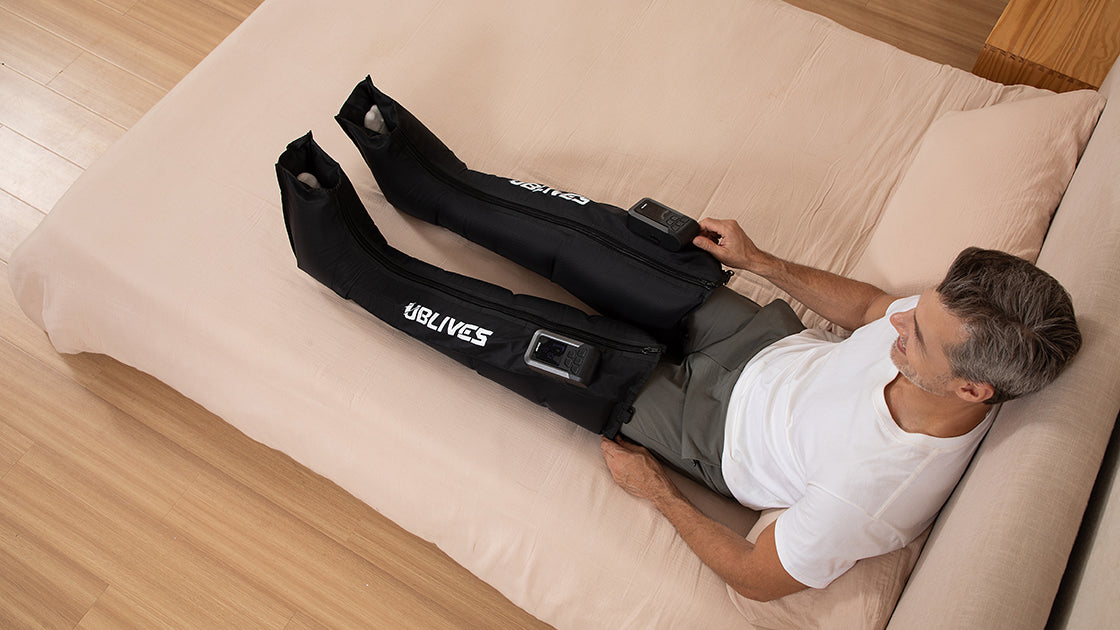Have you seen those cool boots athletes wear? They are recovery boots. These boots help muscles heal faster. Air pressure in them reduces muscle pain and stress. These special devices make recovery quicker. NBA players love them. Air compression boots boost blood flow. But not everyone should use them. It's important to know who should avoid these boots. Using them safely gives benefits without harm. Learn how to use the boots right. Find out if these recovery boots are good for you.
Understanding Compression Boots

What Are Compression Boots?
Compression boots are important in Compression Therapy. They squeeze your legs to help blood flow and ease muscle pain. The Benefits of Compression Therapy include quicker healing and fewer injuries. Athletes use these boots to perform better and heal faster. Compression Boots remove lactic acid after hard workouts. This helps reduce swelling and brings fresh nutrients to the tissues.
In sports and therapy, Compression Boots are key. Athletes depend on them for top performance. These boots boost circulation, bringing more oxygen to the muscles. Better blood flow means faster recovery and less tiredness. Systems like these also help with swelling from things like edema. Whether you're a pro or just active, Compression Boots can really help.
How Do Compression Boots Work?
How do they work? It's interesting! These boots fill with air and then let it out in a pattern. This copies how your leg muscles naturally pump blood. Air Compression Therapy involves this pressure to move blood around better. The Benefits of Compression Therapy include removing waste and helping lymph drainage, reducing stiffness after exercise.
Using Compression Boots gives great results. You get more flexible muscles and less tightness. Better blood flow helps your muscles work well and lowers injury chances. Relax compression boots increase endurance too, which can lower injury risks further. For those wanting good health, these systems are helpful.
Products like the Air Relax compression boots give these benefits, making them essential for anyone wanting better recovery and performance.
Who Should Not Use Compression Boots?
Health Problems
People with deep vein thrombosis (DVT)
If you have DVT, don't use these boots. Blood clots need special care. Compression can make it worse. Always ask a doctor first.
People with bad peripheral artery disease (PAD)
PAD affects leg blood flow. Boots can add pressure to arteries. This might cause more issues. Don't use them if you have PAD.
Patients with lung fluid problems
Fluid in lungs is called pulmonary edema. Compression can move fluid more. This might make it worse. Avoid boots if you have this issue.
Those with swollen veins and clots
Thrombophlebitis means swollen veins with clots. Compression may worsen it. Don’t use boots if you have this condition.
Special Health Concerns
People with skin infections or wounds
Open wounds need air to heal well. Boots cover skin tightly, slowing healing. Avoid them if you have skin problems.
Individuals with serious heart issues
Heart troubles need careful handling. Compression affects blood flow and pressure, straining the heart. Talk to your doctor first.
People with new fractures or injuries
Broken bones and injuries need rest and care. Compression adds pressure, delaying healing. Don’t use boots if recently injured.
Other Things to Think About
Pregnant women
Pregnancy changes how blood moves in the body. Compression might not be safe for all pregnant women. Ask your doctor before using them.
People allergic to materials
Some boot materials can cause allergies. Check what they’re made of first if you're allergic.
Patients at risk for nerve damage
Conditions like diabetes increase nerve damage risk. Compression adds pressure on sensitive spots, so talk to your doctor first.
Alternatives to Compression Boots

Other Compression Devices
There are other compression tools besides boots. You can try compression socks and sleeves. They gently squeeze your legs like the boots do. Athletes use them to help blood flow and heal muscles. Wear these socks during sports or when resting. They help stop swelling and improve circulation.
Another choice is manual massage techniques. A Lymphatic Draining Massage helps move lymph fluid in your body. This massage reduces swelling and aids healing. Athletes find it useful after hard workouts. You can do these massages at home or see a professional for best results.
Lifestyle and Dietary Adjustments
Changing habits helps muscles recover better. Hydration and nutrition are very important. Drinking water helps your body work well, including moving lymph fluid. Eating right gives muscles what they need to fix themselves. A balanced diet with proteins, vitamins, and minerals speeds up recovery.
Doing regular physical activity also keeps muscles healthy. Exercise moves blood around and makes muscles stronger. Activities like walking, biking, or swimming help circulation. These exercises keep the lymph system healthy too.
Athletes gain from these other methods. Using compression tools and changing habits boosts performance and recovery. Adding these practices improves muscle health and lowers injury chances.
Remember, using devices safely like Ublives is key for good recovery and better performance.



Share:
When to use compression boots
How to Buy Compression Boots Easily